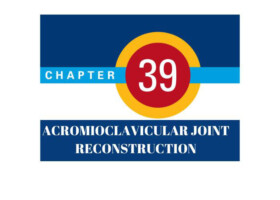
Authors:
Joshua A. Greenspoon, Maximilian Petri, Peter J. Millett
Abstract:
Acromioclavicular (AC) joint injuries account for 9% to 12% of all shoulder injuries and are grouped according to the Rockwood classification system. Grades I and II injuries represent strain and partial tearing of supporting ligaments and are treated conservatively with excellent results. Surgical management is typically indicated for patients with grades IV to VI AC joint injuries. For patients with grade III injuries, controversy still exists regarding the optimal treatment strategy. In addition to patients with failed conservative treatment, some surgeons advocate early operative management for high-level athletes and manual laborers. However, complication rates of AC joint reconstruction have been reported to be as high as 80%, including hardware failure, graft ruptures, coracoid and clavicle fractures, adhesive capsulitis, and damage to the brachial plexus and axillary nerve.
A large variety of stabilization methods have been introduced for the AC joint, with 162 techniques described in 120 studies, including K-wire trans-fixation, hook plates, arthroscopic TightRope (Arthrex, Naples, FL), and suture anchors. No gold standard procedure has been established. The authors’ preference is an arthroscopically assisted anatomic coracoclavicular ligament allograft reconstruction.
For the complete study: Acromioclavicular Joint Reconstruction
